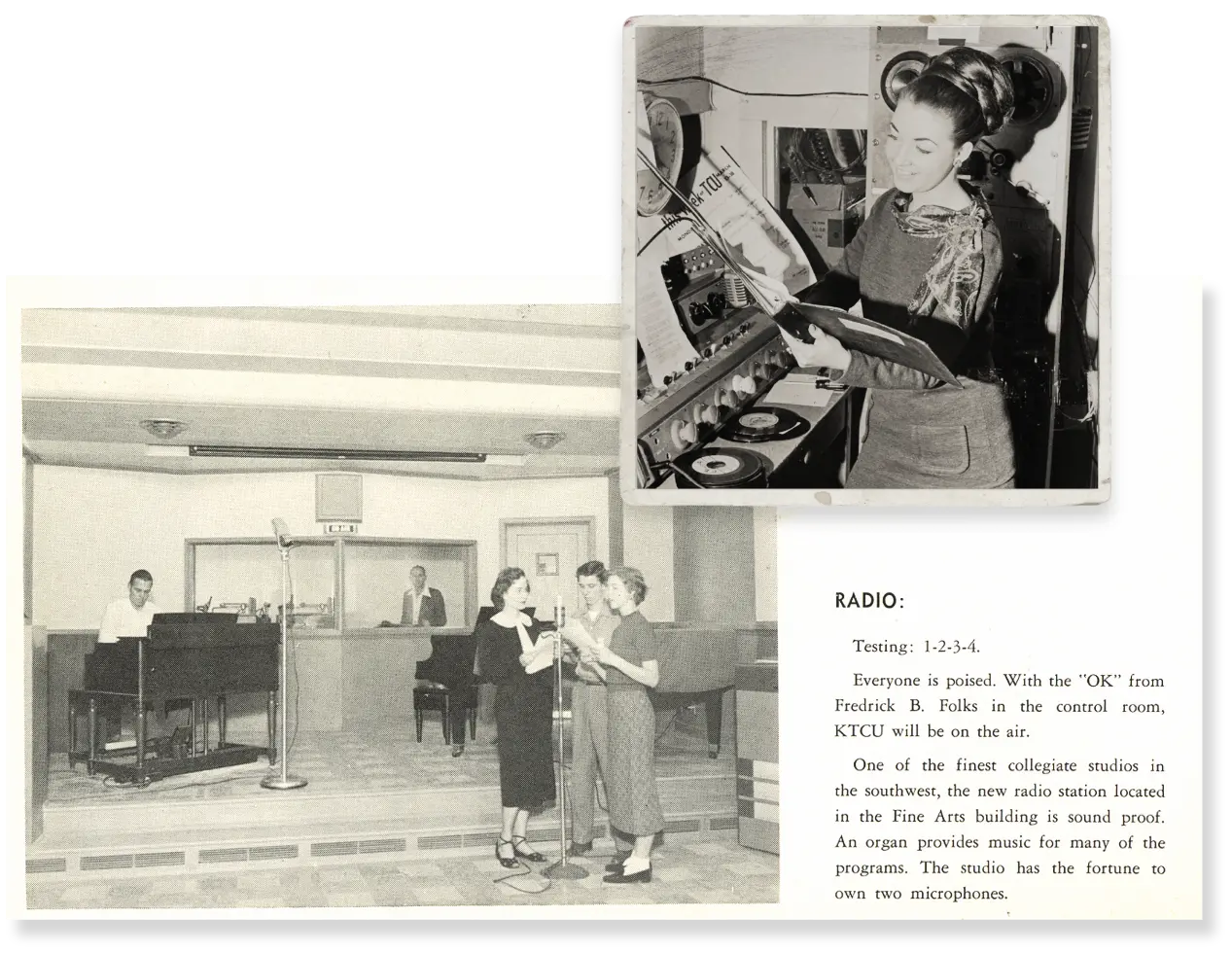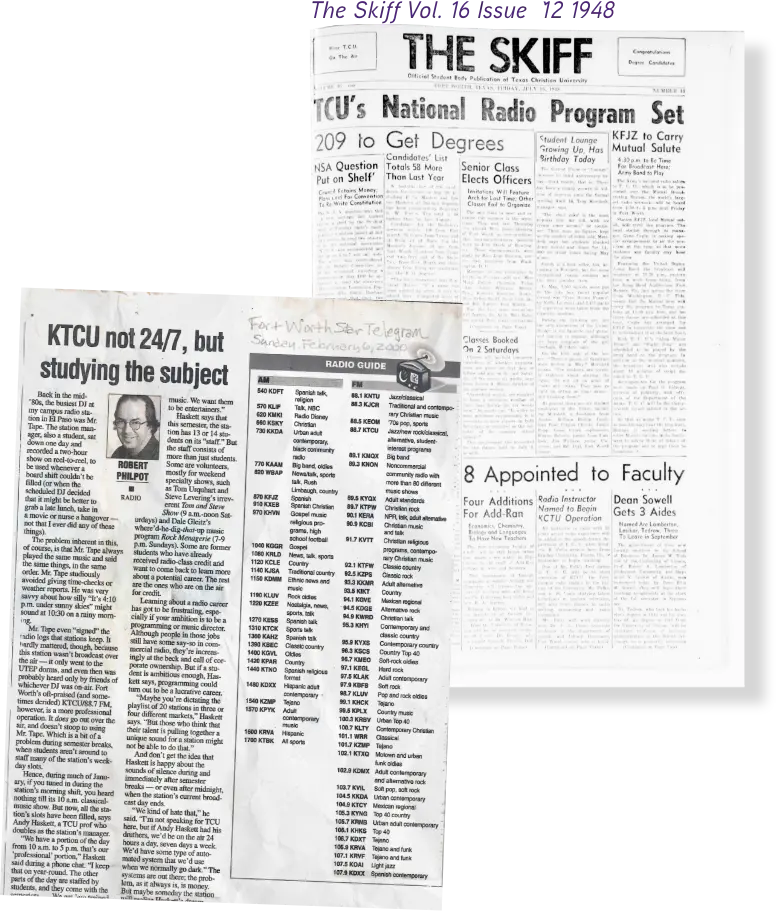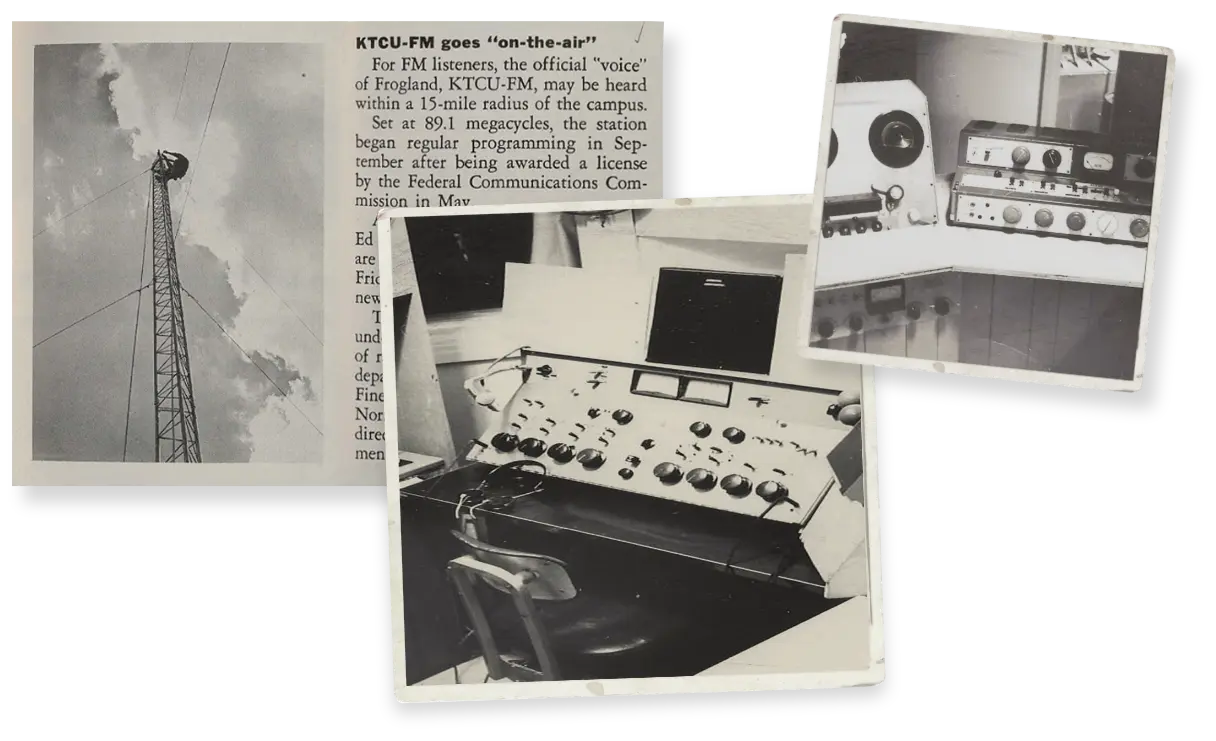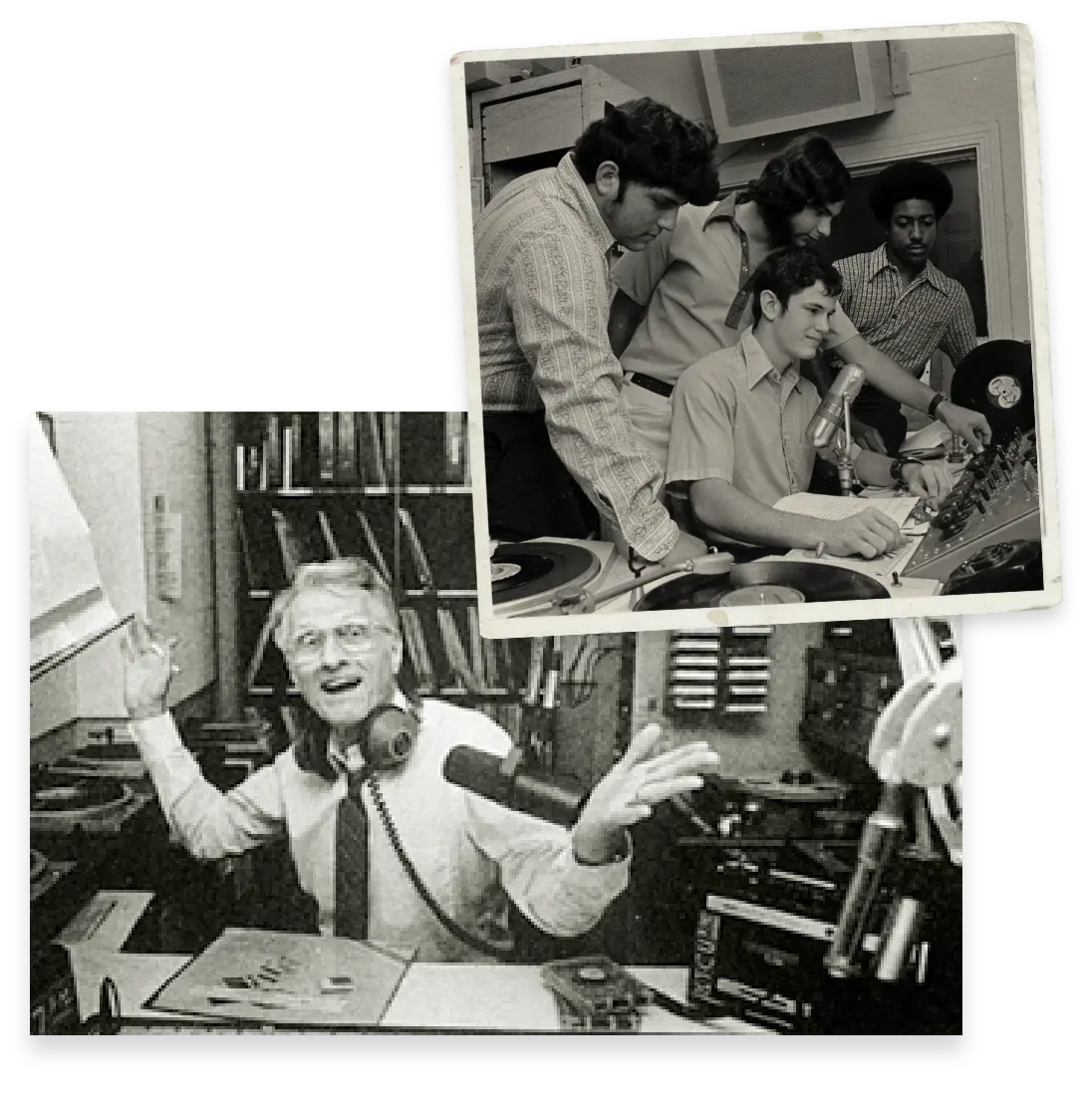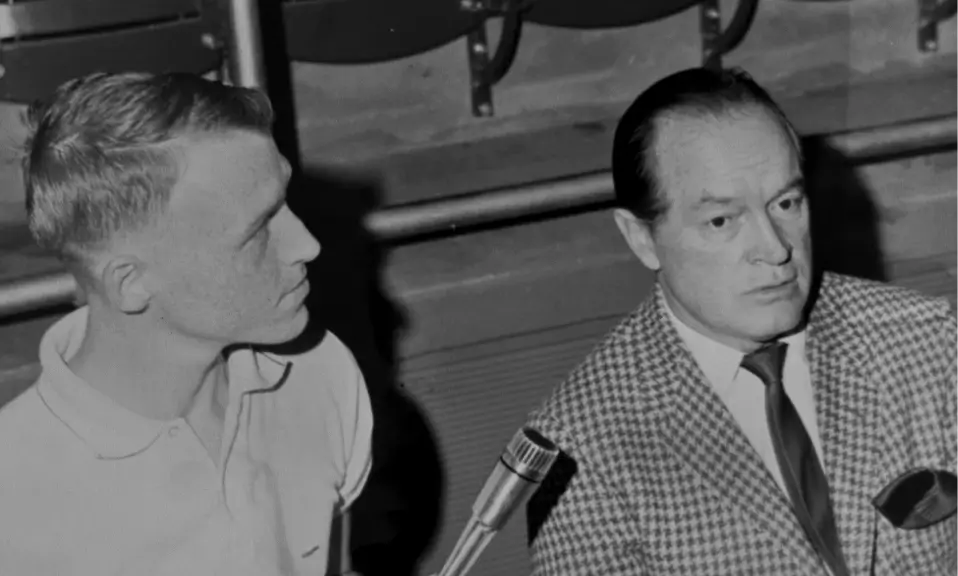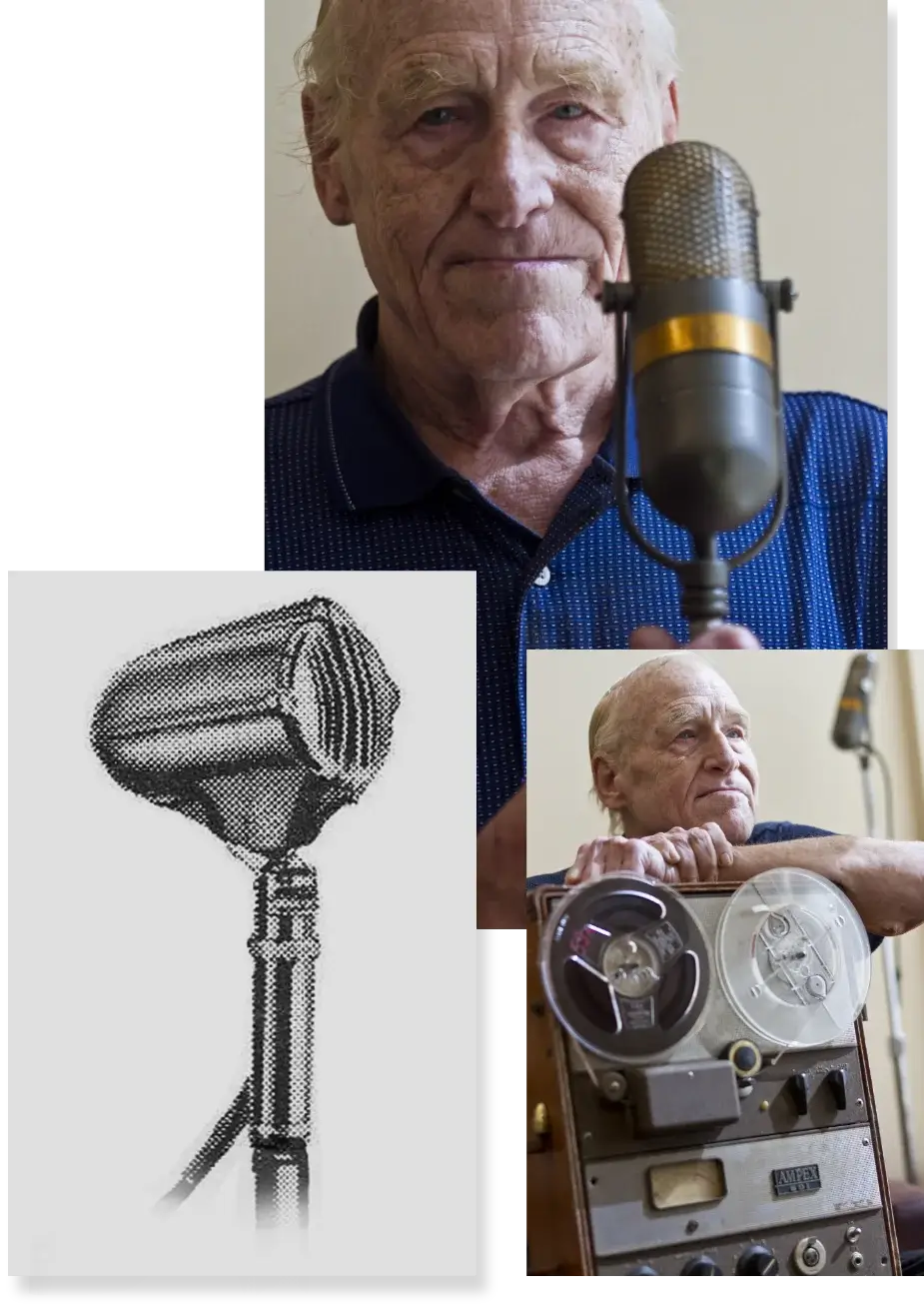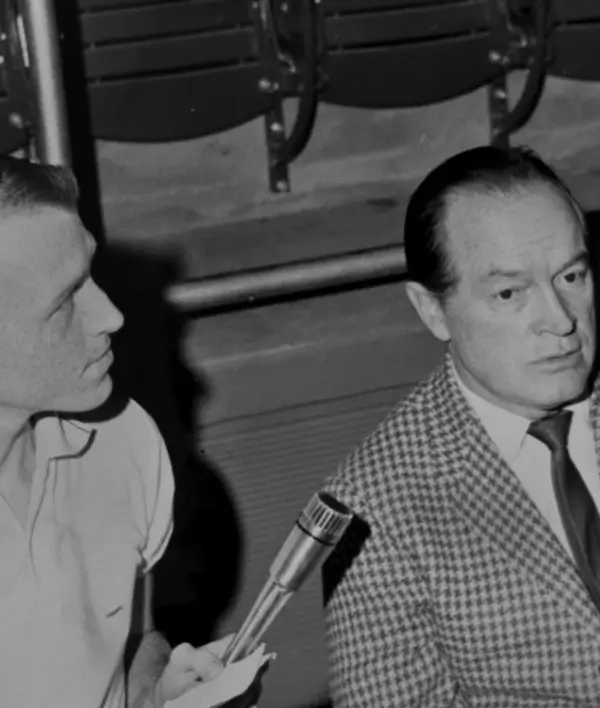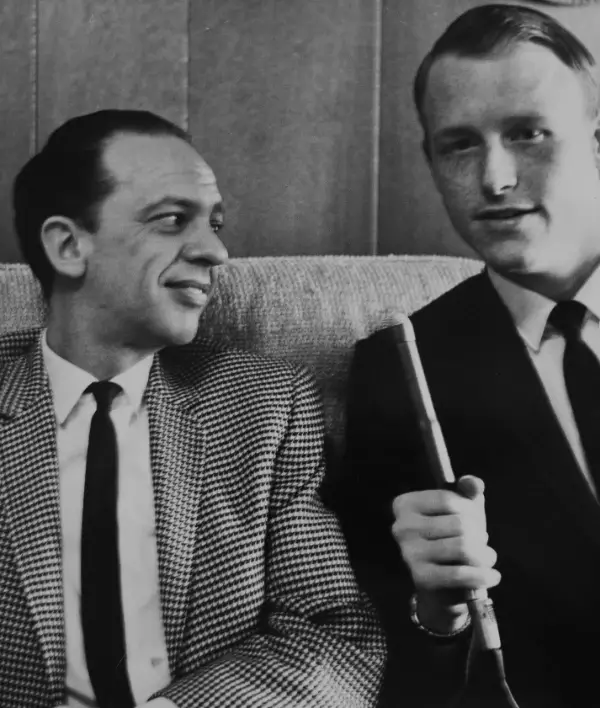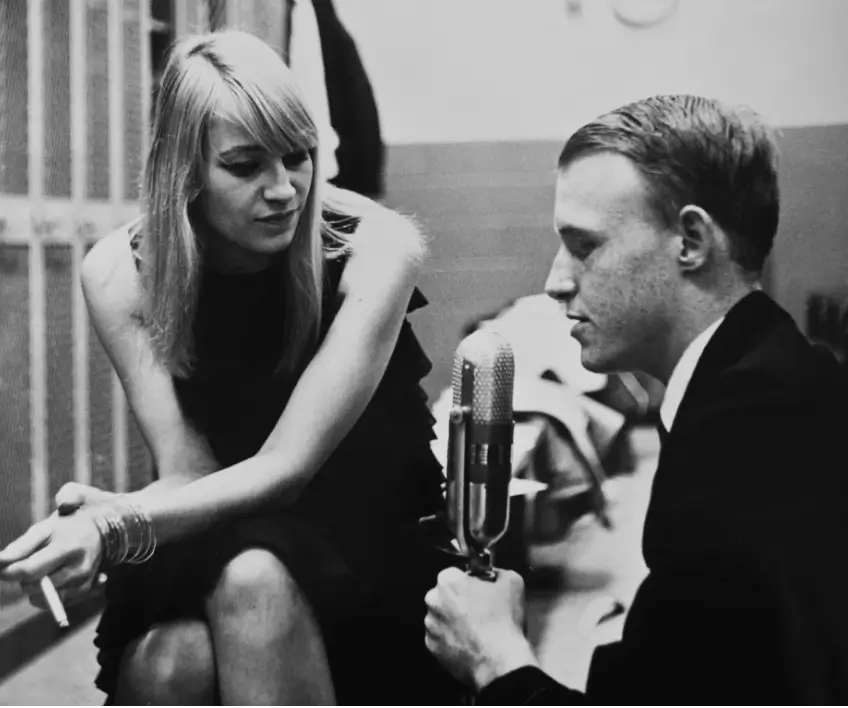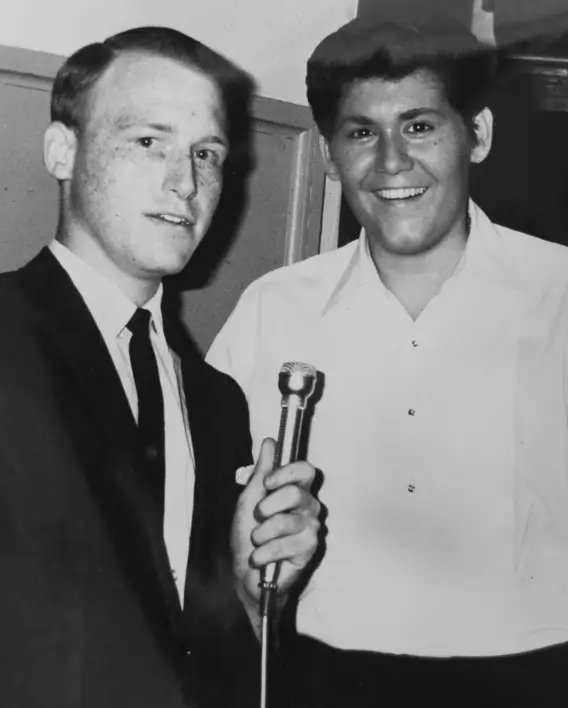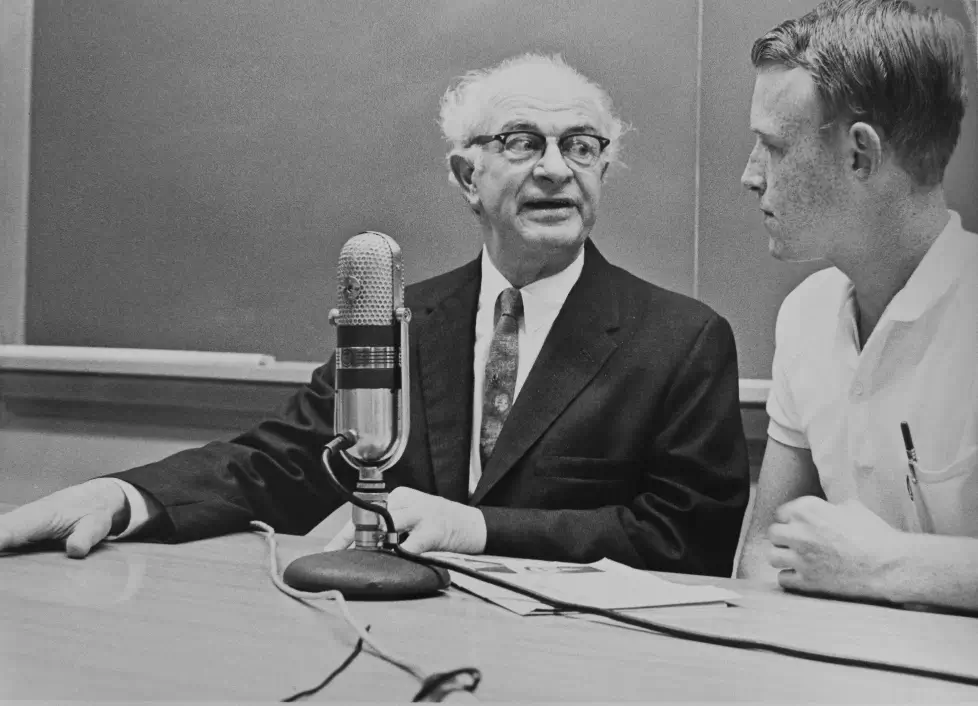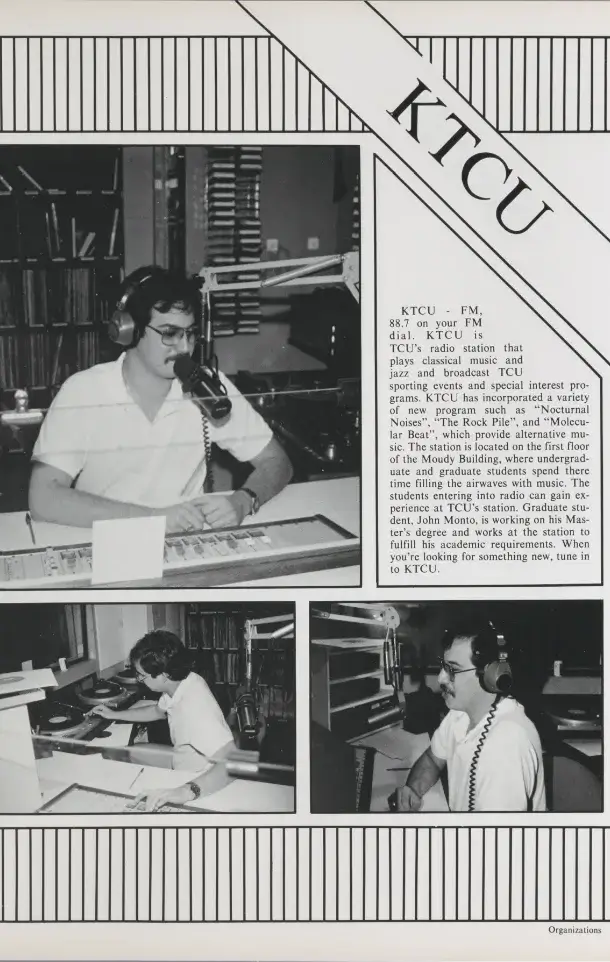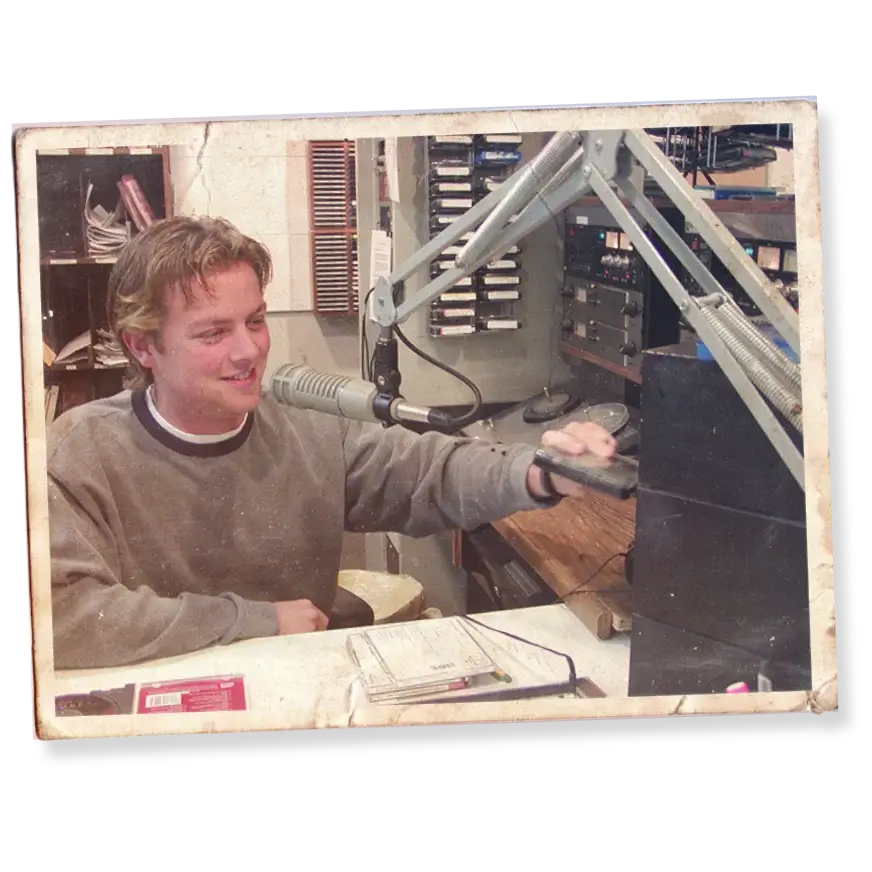KTCU Radio:
Venturing into a
new media format
Scroll
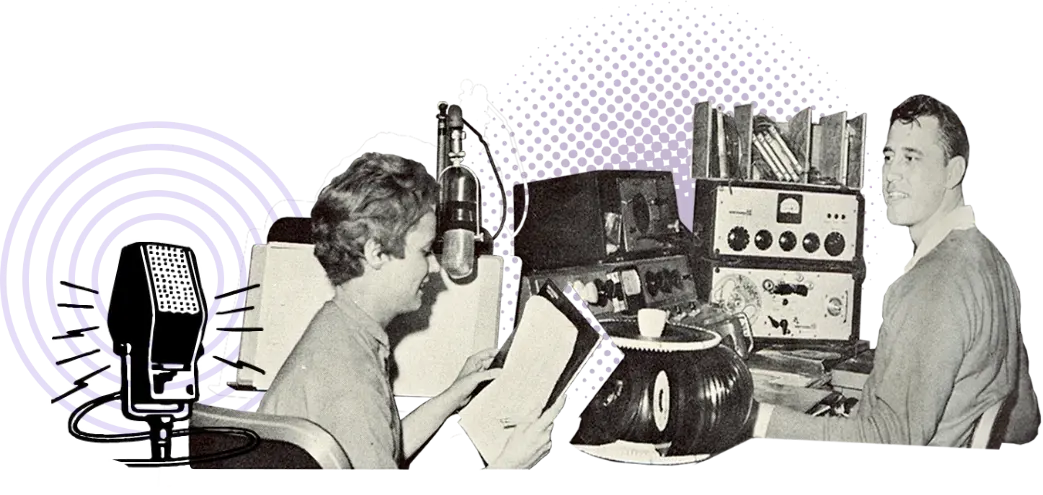
The Foundations
Of KTCU Radio
The foundations of radio station KTCU can be traced to the 1920s, when students became intrigued with the new medium of radio. By 1928, they had founded a TCU Radio Club, which they renamed Radio Players in 1929. A decade later – in 1938 – students’ interest in radio was strong enough that faculty added courses on “radio technique” and “radio reading.” By 1948, faculty in the Department of Speech and Drama had approved offering a major in radio.
These developments paved the way for KTCU, which went on the air that year as a closed circuit station for a fee of $150. The station could be heard in nearby campus residence halls.



Acquiring Up-to-Date Equipment And Securing an FCC License
Before he graduated in 1949, Luther Adkins helped obtain a console and turntable to get the station started. For years afterward, a yearbook photo of Adkins hung in the KTCU studios. A label under the portrait dubbed Adkins the station’s founder, but as a student, his voice was never heard on KTCU. He worked behind the station’s scenes, although in 1982, when KTCU moved into its new state-of-the-art studios in the Moudy South building, Adkins was convinced to sit at a KTCU radio console and pose for photos that made him look like a disc jockey.
By 1952, KTCU was able to buy a new transmitter and audio console, and to generate some of its own support by selling advertising. Ad sales generated enough funding by 1955 that the station bought seven new transmitters and converted to line-carrier transmission, expanding its signal.
By 1958, with sponsors such as Lucky Strike cigarettes, Hammond Organ studios, Record Town and University State Bank, KTCU owned 11 transmitters and could be heard throughout campus.
KTCU really made itself heard in 1964, when it obtained an FCC license that let it begin operating as an educational FM radio station. In September, a Skiff newspaper headline proclaimed, “Officially Blessed by FCC, KTCU-FM Goes Into Action on 89.1 This Month.” That summer, to prepare for FM transmission, TCU had erected a 60-foot tower atop Ed Landreth Auditorium.
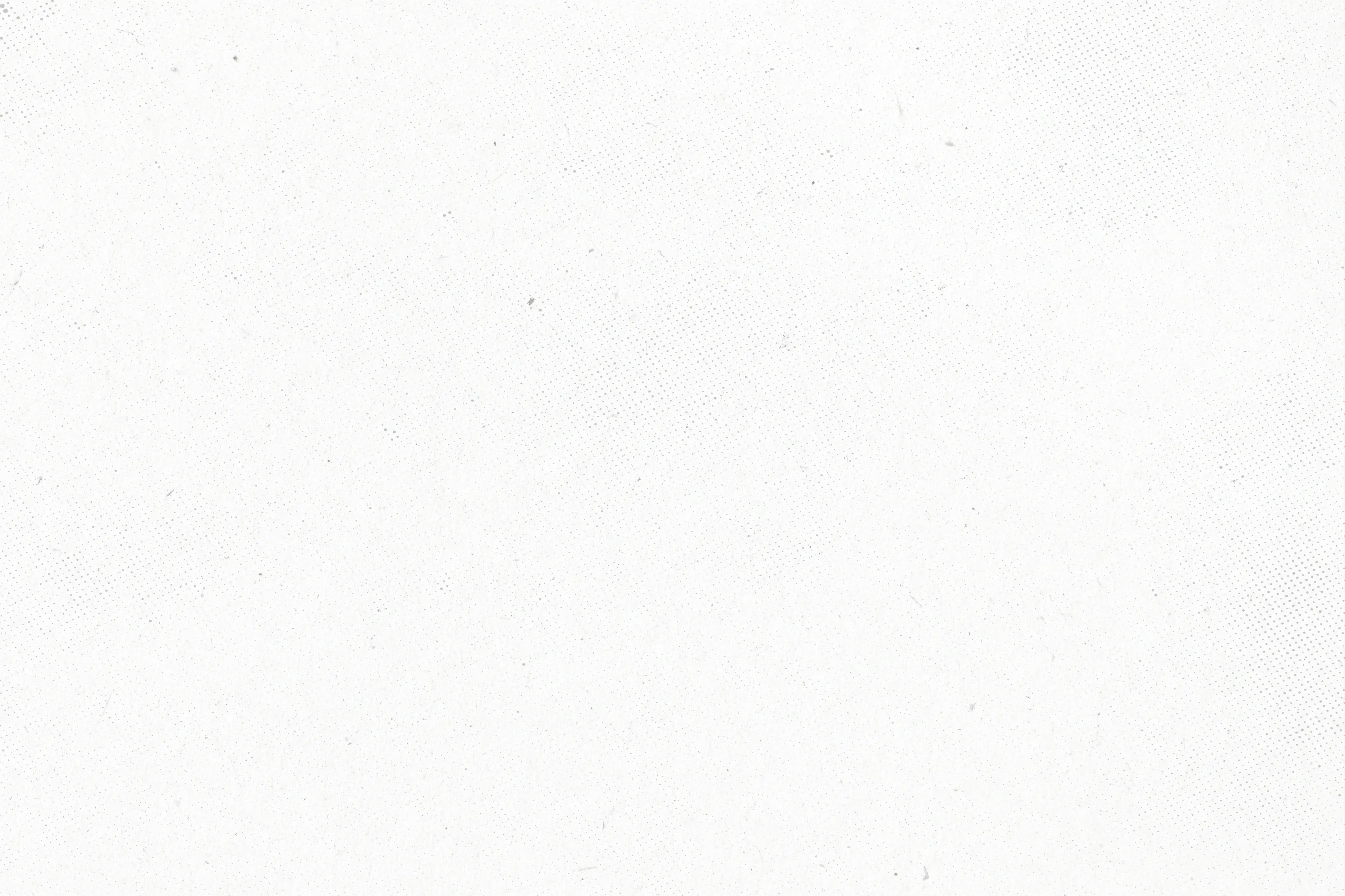
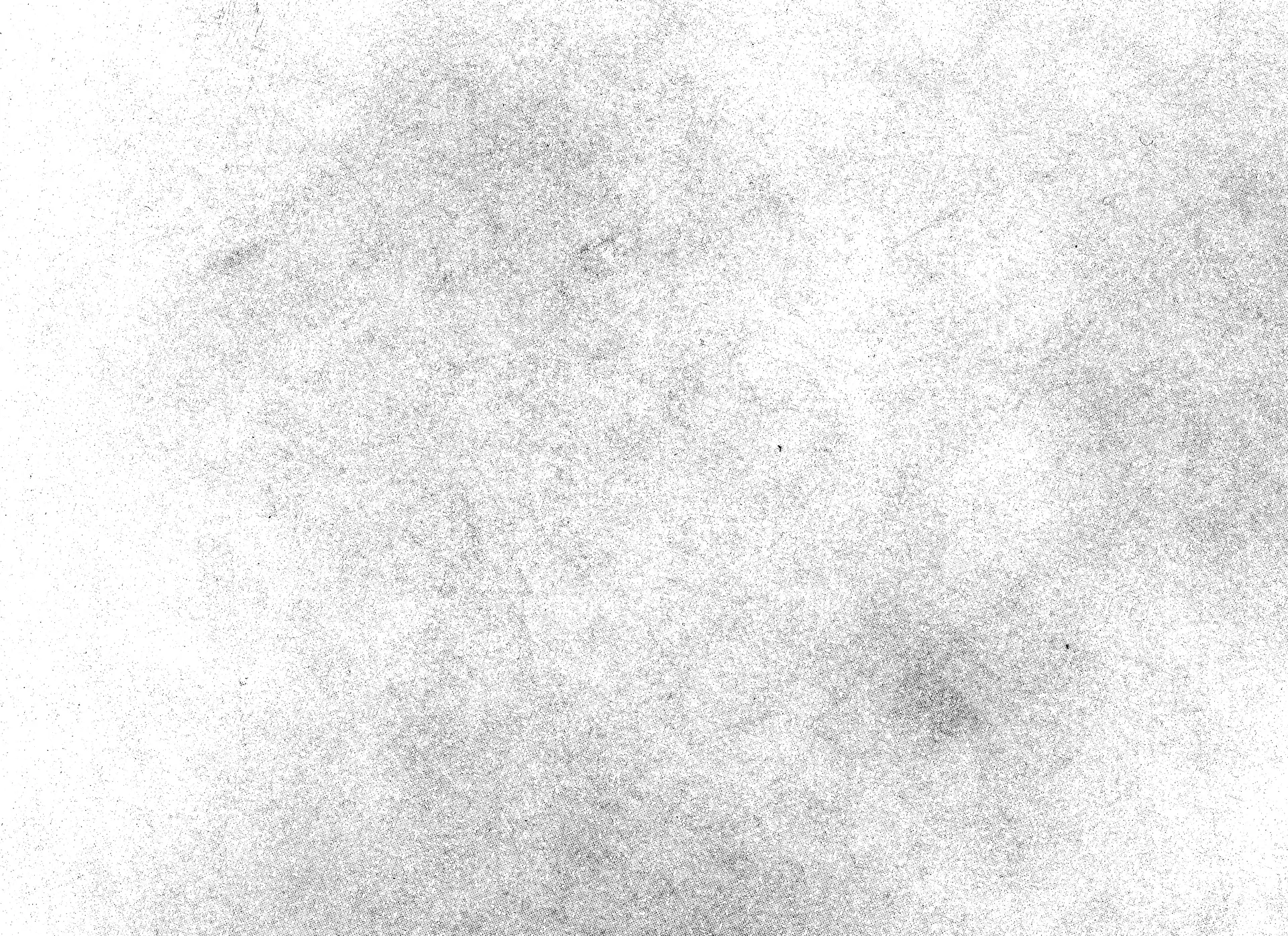
Barto Farrar: Interviewing famous performers to air on KTCU
In May 1964, at the end of its first school year as an FM station, KTCU signed off for the summer.
When it returned to air that fall, student Barto Farrar began to make a name for himself by interviewing big-name entertainers.
Farrar, who graduated in 1968, learned to run KTCU’s audio board and work as a disc jockey because his major in radio-TV-film required the experiences. Soon, Farrar was hooked on radio and created “Backstage with the Stars,” his own half-hour radio show.
He recorded his first big interview in fall 1964 with Bob Hope, whose Bob Hope-Henry Mancini Orchestra Show was booked at TCU for homecoming celebrations. Years later Farrar told TCU Magazine, “When you’ve never done an interview or anything and here you’re interviewing Bob Hope – and then right after, Henry Mancini – I remember shaking quite a bit.”
As a student, Farrar lived off campus and owned a car, which helped him visit Fort Worth entertainment venues and convince entertainers to record interviews with him. At the Guys and Dolls Ballroom, he spoke with bandleader Guy Lombardo. At the Will Rogers Auditorium, he talked with country music star Lefty Frizzell, who played his chart-topping hit “Saginaw, Michigan” for Farrar to record and air on KTCU.
When actor Don Knotts visited Fort Worth to promote a movie, Farrar got him to talk about winning multiple Emmy awards for portraying television’s Barney Fife on “The Andy Griffith Show.”Farrar seized an opportunity to drive the popular folk trio Peter, Paul and Mary from Dallas Love Field to Fort Worth for a TCU concert date. “I remember going to Daniel-Meyer Coliseum,” Farrar told TCU Magazine. “I was knocking on the back door and they said, ‘Go away! We’re waiting for Peter, Paul and Mary! And I said, ‘I’ve got them! Open the door!’” The door opened, and Farrar soon recorded an interview with the trio that aired on KTCU.

Training student staff and selecting formats
When KTCU resumed operating in fall 1965, The Skiff newspaper reported the station would be on air from 2 to 10 p.m. daily “with broadcasts consisting mainly of easy listening music and educational programs.” The station also would air about 100 hours of programming from the National Educational Radio Network and starting in December, would air Metropolitan Opera broadcasts from New York.
To work at KTCU, student operators had to pass a 100-question exam on broadcasting and electronics, which qualified them for a required third- class radio-television license. About 10 students were selected as on-air announcers, and another 50 could work behind the scenes.
The Skiff also noted that KTCU now provided “an excellent signal” that could “be picked up within four miles of campus, with an adequate signal in a 15-mile radius.”
By 1967, KTCU had settled on a rock ‘n roll format, which lasted until 1977, when the university said KTCU should be a classical, jazz and public affairs station.
In 1980, to prepare KTCU for its move into the new Moudy South building, TCU erected a 321-foot tall tower near the Amon G. Carter football stadium. Subsequently, the station’s 1-millivolt signal meant its listening radius was 20 miles.
Today, with a format called “The Choice” that mixes talk, sports and music of many genres, KTCU continues FM transmission in north Texas. In keeping with its founding as a venue for students to explore a new media format, KTCU also teaches students to offer audio content via online live streams and podcasts that are downloaded by listeners from around the world.
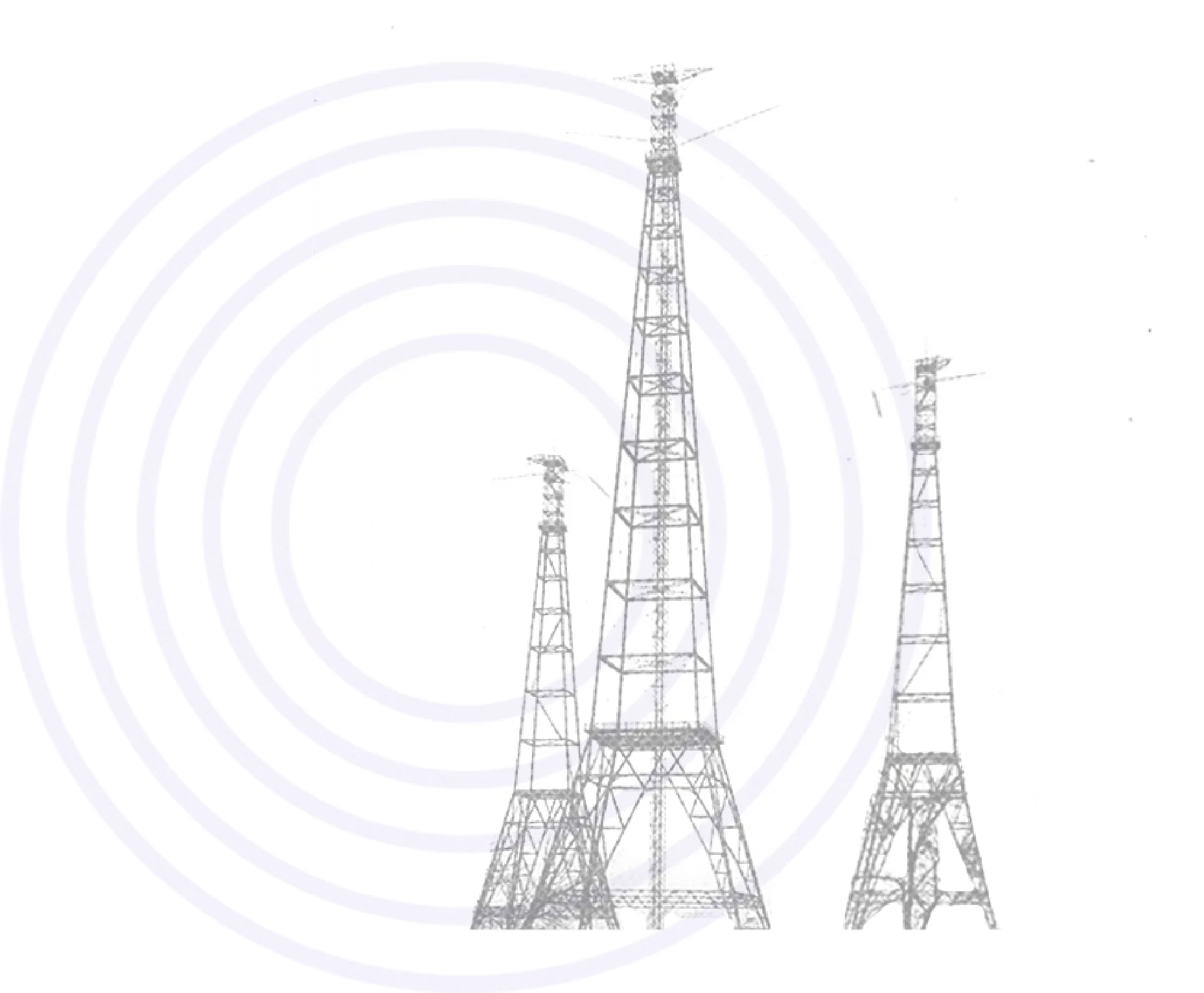
Previous
The SkiffContinue
TCU’s Forensics Frogs